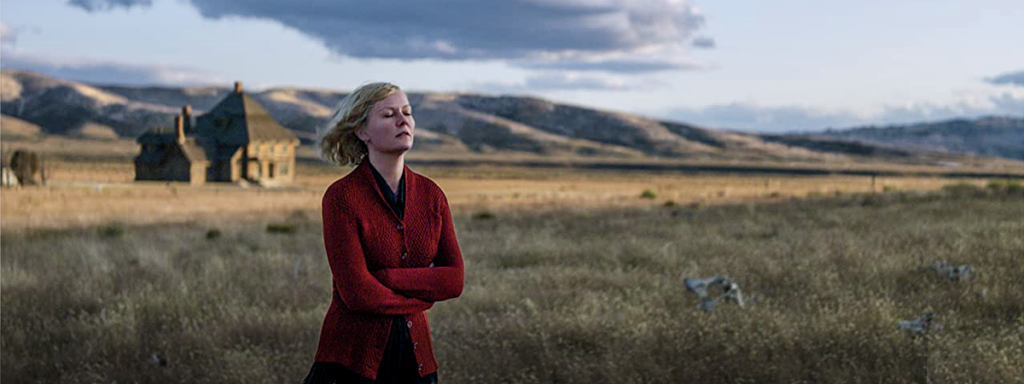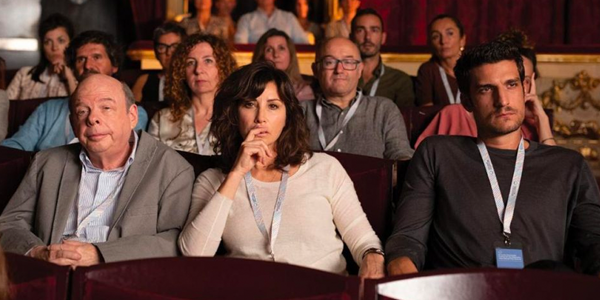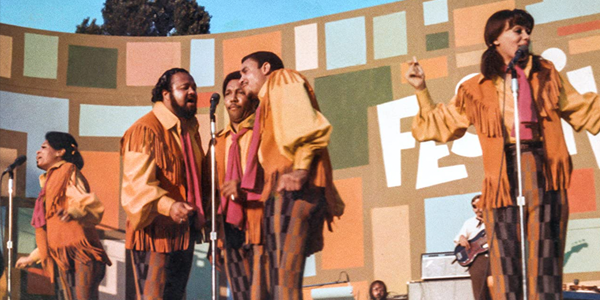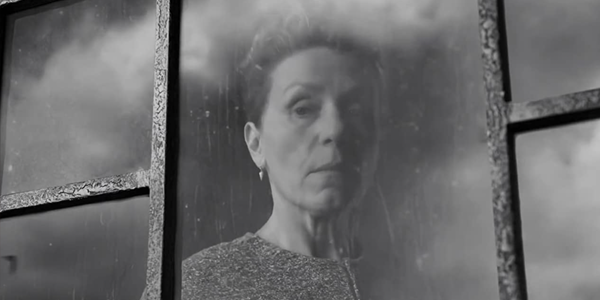recent reviews
Sign up for our monthly newsletter
to stay up to date on Cineluxe
One of this year’s big Oscar favorites, this Netflix western leans more on character and atmosphere than action
by Roger Kanno
February 18, 2022
The Power of the Dog (written and directed by Jane Campion, and based on the novel by Thomas Savage) has received many accolades, including 12 Academy Award nominations, the most of any film this year. It tells the story of the Burbank brothers, Phil (Benedict Cumberbatch) and George (Jesse Plemons), two successful Montana cattlemen in the 1920s who meet Rose Gordon (Kirsten Dunst), a widowed innkeeper, and her son Peter (Kodi Smit-McPhee) during a cattle drive. While the kind-hearted George falls in love with and eventually marries Rose, Phil is unnecessarily cruel to everyone he meets, especially Rose and Peter.
It is sometimes difficult to watch Cumberbatch, so convincing is his portrayal of the wholly unpleasant Phil, but his performance is never over the top; rather, it’s nuanced and fascinating in an unnerving manner. Real-life couple Plemons and Dunst are just as convincing and no less captivating as the subdued counterparts to the volatile Phil. Smit-McPhee is excellent as the meek, studious young Peter, seemingly out of place among the rough ranch hands. All are deserving of their Oscar nominations. Campion is also nominated for her adapted screenplay, as one of the producers for Best Picture, and as Best Director. The Power of the Dog is both a period piece and a psychological drama, as well as a finely crafted character study of complex individuals.
Outdoor scenes filmed on location in New Zealand have an austere look, wonderfully capturing the rustic atmosphere of cattle ranching at the end of the Wild West era. The color palette is on the cool side, with dusty cattle-wrangling scenes sometimes showing slight aliasing, but otherwise the picture (shot in ArriRaw at 4.5K and presented in Dolby Vision on Netflix) has excellent sharpness and detail. While the exterior shots are bright and sharp, the dimly lit interiors can look a little soft, but the lighting has a natural organic quality even though the interiors were shot entirely on soundstages.
Ari Wegner’s cinematography, which was also nominated for an Oscar, is breathtaking, with the untamed New Zealand landscape looking both stark and dazzling. Images are framed with the picturesque scenery in mind, and wide shots will look truly majestic on high-quality video displays. There aren’t a lot of bright primary colors to be seen as exteriors are dominated by dry, prairie-like landscapes and the characters wear mostly earth tones, but the film’s UHD presentation is simply gorgeous in an understated manner.
The Oscar-nominated sound design by Richard Flynn, Robert Mackenzie, and Tara Webb is similarly subdued. The opening scenes start off with well recorded, rambling plucked strings and the atmospheric sounds of a cattle drive on the open plains setting an appropriately melancholic tone. But much of the rest of the film consists of only dialogue, occasional Foley effects, and very limited use of the music score. Foley is often mixed at low levels but is well suited to the onscreen action, and the minimalist sound design meticulously captures the feeling of the story’s setting during simpler times.
The lack of surround presence during most of the film serves to highlight a scene where Phil’s banjo playing emanates from the right surround channel then moves to the front speakers once his presence is established. This sudden use of the surrounds is unexpected and helps to heighten the significance of Phil’s actions. There is more liberal use of Jonny Greenwood’s haunting, Oscar-nominated score near the end of the film as the story builds to its deliberate and satisfying conclusion.
The Power of the Dog is Campion’s first film in more than ten years, during which time she created two limited television series, Top of the Lake and Top of the Lake: China Girl. Both are slow burns like The Power of the Dog and worth seeking out if you’re a fan of her work, but her return to the big screen is beautiful to look at and an absolutely compelling film.
Roger Kanno began his life-long interest in home cinema almost three decades ago with a collection of LaserDiscs and a Dolby Surround Pro Logic system. Since then, he has seen a lot of movies in his home theater but has an equal fascination with high-end stereo music systems. Roger writes for both Sound & Vision and the SoundStage! Network.
PICTURE | While the exterior shots in Netflix’ Dolby Vision presentation are bright and sharp, the dimly lit interiors can look a little soft, but the lighting has a natural organic quality even though the interiors were shot entirely on soundstages
SOUND | The Oscar-nominated sound design is subdued, with much of the film consisting of only dialogue, occasional Foley effects, and very limited use of the music score
© 2023 Cineluxe LLC





